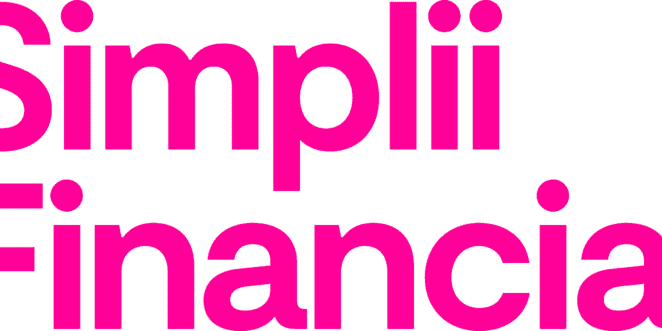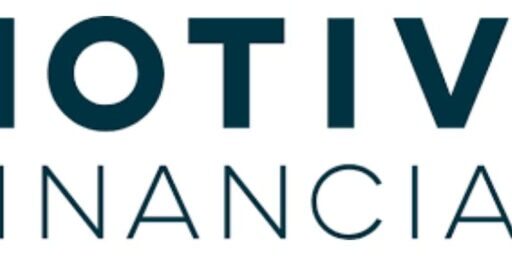Smith Manoeuvre Portfolio – August 2012
For those of you just joining us, below is my portfolio that is leveraged with money borrowed from my home equity line of credit (HELOC). As the money borrowed is used to invest, the interest charged is tax deductible. I write an update every so often to show new positions added along with any market gains/losses. For more details on the strategy and procedure, check out my modified smith manoeuvre strategy and my comparison of online stock brokers.
It has been about three months since the last update (May 2012) with a bit of activity in the leveraged portfolio. We have added to one existing position, and added a few new positions. With the TSX still in negative territory year to date, it has been challenging as market values are down.
What did I buy over the past few months? I added to my Transcontinental position and started new positions in Calfrac Well Services, Baytex Energy, and Finning International.
So which dividend paying companies increased their distributions thus far in the year? In my portfolio, increases include dividends from Royal Bank, Scotia Bank, TransCanada Corp, TD Bank, Canadian Utilities, Rogers Communications, Pason Systems, Corus Entertainment, Thompson Reuters, Canadian Pacific Railway, Canadian Oil Sands (twice), and First Capital Realty.
My dividend watch list remains similar where I am looking to increase my position in BMO, TD, ENB, FCR and possibly add new positions in Bonterra Energy (BNE), Canadian National Railway (CNR) and Bell Aliant (BA) when their valuations become attractive.
Going forward, I plan to increase my holdings in this portfolio and perhaps use my savings to pay down the investment loan if the balance gets uncomfortably large.
The Smith Manoeuvre Portfolio as of August 12, 2012 (prior to open):
| Stock | Symbol | Shares | Avg Buy Price | Total | Div/Share | Yield |
| Royal Bank | RY.T | 100 | $48.39 | $4,838.99 | $2.28 | 4.71% |
| CIBC | CM.T | 45 | $67.14 | $3,021.25 | $3.60 | 5.36% |
| Power Financial | PWF.T | 105 | $35.14 | $3,689.65 | $1.40 | 3.98% |
| Scotia Bank | BNS.T | 105 | $41.91 | $4,400.52 | $2.20 | 5.25% |
| Manulife Financial | MFC.T | 125 | $33.12 | $4,139.48 | $0.52 | 1.57% |
| Fortis Properties | FTS.T | 150 | $25.63 | $3,843.98 | $1.20 | 4.68% |
| TransCanada Corp | TRP.T | 100 | $33.50 | $3,349.74 | $1.76 | 5.25% |
| AGF Management Limited | AGF.B.T | 50 | $22.71 | $1,135.49 | $1.08 | 4.76% |
| Bank of Montreal | BMO.T | 25 | $44.17 | $1,104.24 | $2.80 | 6.34% |
| Husky Energy | HSE.T | 135 | $32.53 | $4,391.27 | $1.20 | 3.69% |
| TD Bank | TD.T | 50 | $48.24 | $2,412.23 | $2.88 | 5.97% |
| Enbridge | ENB.T | 80 | $18.43 | $1,494.39 | $1.13 | 6.05% |
| TransAlta | TA.T | 50 | $21.47 | $1073.49 | $1.16 | 5.40% |
| First Capital Realty | FCR.T | 160 | $9.71 | $1,555.20 | $0.84 | 8.65% |
| Canadian Utilities | CU.T | 50 | $36.40 | $1,819.99 | $1.77 | 4.86% |
| Ensign Energy Services | ESI.T | 200 | $14.98 | $2,995.98 | $0.42 | 2.80% |
| Mullen Group | MTL.T | 100 | $14.54 | $1,453.98 | $1.00 | 6.88% |
| Rogers Communications | RCI.B.T | 100 | $34.39 | $3,439.48 | $1.58 | 4.59% |
| George Westin Ltd | WN.T | 50 | $68.64 | $3,441.99 | $1.44 | 2.09% |
| Pason Systems | PSI.T | 200 | $13.97 | $2,793.98 | $0.44 | 3.15% |
| Corus Entertainment | CJR.B.T | 100 | $19.87 | $1,996.99 | $0.96 | 4.81% |
| Thompson Reuters | TRI.T | 90 | $33.40 | $3,006.18 | $1.28 | 3.83% |
| Brookfield Properties | BPO.T | 150 | $16.01 | $2,401.23 | $0.56 | 3.50% |
| Canadian Pacific Railway | CP.T | 30 | $53.90 | $1,626.99 | $1.40 | 2.58% |
| Canadian Oil Sands | COS.T | 150 | $19.14 | $2,871.48 | $1.30 | 6.79% |
| Leons Furniture | LNF.T | 200 | $12.06 | $2,412.98 | $0.40 | 3.32% |
| Encana | ECA.T | 100 | $18.82 | $1,881.99 | $0.80 | 4.25% |
| Transcontinental | TCL.A.T | 200 | $11.32 | $2,263.98 | $0.58 | 5.12% |
| Calfrac Well Services | CFW.T | 50 | $23.00 | $1,149.99 | $1.00 | 4.35% |
| Baytex Energy Corp |
BTE.T | 35 | $42.98 | $1,504.14 | $2.64 | 6.14% |
| Finning International | FTT.T | 100 | $24.10 | $2,409.99 | $0.56 | 2.32% |
More Stats
- Total Cost Base of Equities (inc. fees): $79,921.26 (vs. 73,865.15)
- Market Value of Equities (Closing August 12, 2012 – not including dividends or cash): $87,749.55 (vs. $81,099.70)
- Total Dividends / Year: $3,499.04 (vs. $3,195.23)
- Portfolio Dividend Yield: 4.38% (vs. 4.33%)
Sector Allocation (based on market value)
- Financials: 30.96% (vs. 30.48%)
- Utilities: 8.43% (vs. 11.73%)
- Energy: 29.89% (vs. 29.40%)
- Resources: 0.00% (vs. 0.00%)
- Real Estate: 4.95% (vs. 7.05%)
- Consumer/Telecom: 14.13% (vs. 13.99%)
- Other: 11.65% (vs. 7.36%)
With regards to sector allocation, you may notice that this portfolio is fairly concentrated in financials and energy. Note though that this is one of my accounts where I treat all of my accounts as one big portfolio. In other words, my international and other sector equity exposure are in other accounts.
Disclaimer: There have been a lot of readers who have mentioned that they are interested in a leveraged portfolio. Over the long term it may be lucrative. However, over the short term, equities are volatile and can put the portfolio deep in the red. My portfolio during 2008 is a prime example of what can happen. If you can’t stomach losing 20-30% in the portfolio in any given year, then your risk tolerance isn’t suited for leveraged investing. Here is an article I wrote answering a reader question “Should I Start the Smith Manoeuvre?” Finally, the securities mentioned in this post are not recommendations to buy or sell.
I've Completed My Million Dollar Journey. Let Me Guide You Through Yours!
Sign up below to get a copy of our free eBook: Can I Retire Yet?










@Ed
Hi Ed, I am curious how these CCMF’s returns compare to the TSX or say, FT’s portfolio for his Smith manouvre. Do the tax benefits outweigh the added returns that stocks typically provide? Or is the point reduced volatility?
Thanks for your wisdom!
Hi jxs,
There is no grey area. CRA has published an interpretation bulletin IT-533 that specifically explains the rules. There is no necessity that your investments pay dividends.
The rule is that the investment needs to have the possibility of paying a dividend. Essentially all stock market investments are fine, unless they have a prospectus that specifically forbids paying dividends.
Many growth stocks and smaller companies reinvest all their cash to grow their business and pay no dividends. Management commonly thinks that once the business is mature and growth slows down, then they may start paying a dividend. You can borrow to invest in these companies even when they are not paying a dividend, since all that is necessary for the interest to be deductible is for there to be a possibility that the investment will pay a dividend eventually.
We generally invest as tax-efficiently as possible with the Smith Manoeuvre and try to avoid dividends and taxable capital gains. We do this with tax-efficient, corporate class mutual funds. That means we can deduct the entire interest amount (even though we borrowed money to pay the interest) and have zero (or virtually zero) investment income, so that we can get the largest possible tax refund.
I have been doing the Smith Manoeuvre (in some form) for almost 20 years and still have not received a dividend.
Ed
jxs, I’m not sure how CRA could rule against investment loans as used in the SM without causing problems for investors in other areas. In principle, the deduction is consistent with their philosophy of Canadian tax law.
Thank you very much for the reply and info. I have been told by people that the RCA is very strict on this and there are TAX law changes coming as well on this type of investment. Strict speaking, the investment can only be interest earning investment. Stock investment is kinda a grey area that RCA could pick on you. Have you ever had or heard any problem on claiming loan interest against income?
Thanks!
@jxs, Yes, you definitely can b/c that’s exactly what I’m doing. Just make sure to keep your investment and personal balance separate. Yes, you can use a regular line as well, but again, keep your personal expenses separate.
I have paid off my mortgage but still have HELOC available to use that I have never touched. I am wondering if I can withdraw some from the HELOC, invest it in dividend stocks and deduct the interests at same time??
Also, is that OK to use regular line of credit for this as well?
Thanks.
I can’t believe you don’t have Computer Modelling Group (CMG.TO) on there! They are increasing their dividends consistently and with lots of growth for years now.
Absolutely agree… this isn’t a get rich quick scheme or any other path to guaranteed millions. It’s a tool, like many others, that can be used (correctly) to gain some additional financial leverage. If you don’t have the additional savings to be able to weather a very bad spell of negative cash flow/profits, you shouldn’t even contemplate this system.
Sarlock (and others),
Don’t forget that the dividends aren’t guaranteed (and I believe neither are the HELOC rates). Markets can tank, and companies can cut their dividend rates. Then banks look at their HELOCs that and get skiddish and crank up their rates. Now you’ve got a leveraged investment that is underwater with negative cashflow. I’m not saying it will happen but it could.
In my opinion, I wouldn’t recommend this strategy to anyone unless they could weather losing the entire investment portfolio and still manage the loan. That’s the downside.
Don’t pay down your HELOC, that is counter-productive. If the loan amount makes you uneasy, invest future savings in to a “safe” investment that makes the funds available should you ever wish to pay off the loan and your portfolio is insufficient to pay off the balance (severe market crash, etc). Leave the loan intact, the after-tax interest rate of 1.8% is supremely awesome.
The tax implications of this portfolio is what makes it so advantageous. Being in the top tax bracket is the ideal situation for maximum returns with this system. It’s not as simple as comparing your 3.5% HELOC interest rate to your 3.5% dividend yield on investment. Looking at it straight-on, it seems pointless to engage in such an investment scheme. When the tax is figured in, however, then the system really shines. Assuming you’re at the top tax bracket, you will pay about 23-25% tax depending on what province you’re in. On the flip side, you’ll receive a tax credit of about +/- 43% on your investment loan. This means that a 3.5% dividend yield will net you about 2.6% return after tax, while the 3.5% interest you pay on the loan will cost you about 2.0% after taxes are factored in. Combined, this means that while on paper, your 3.5% yield seems washed out by your 3.5% loan interest, you’re still receiving a 0.6% net return after taxes. This doesn’t seem much, but remember that this is the bank’s money you’re using… you’re receiving 0.6% on an investment portfolio that you wouldn’t normally have. Combine this with potential capital growth in the portfolio over a long period of time and the advantageous tax rate for capital (around 22%) and this system really shines.
If you’re in a lower marginal tax bracket the returns aren’t as impressive.